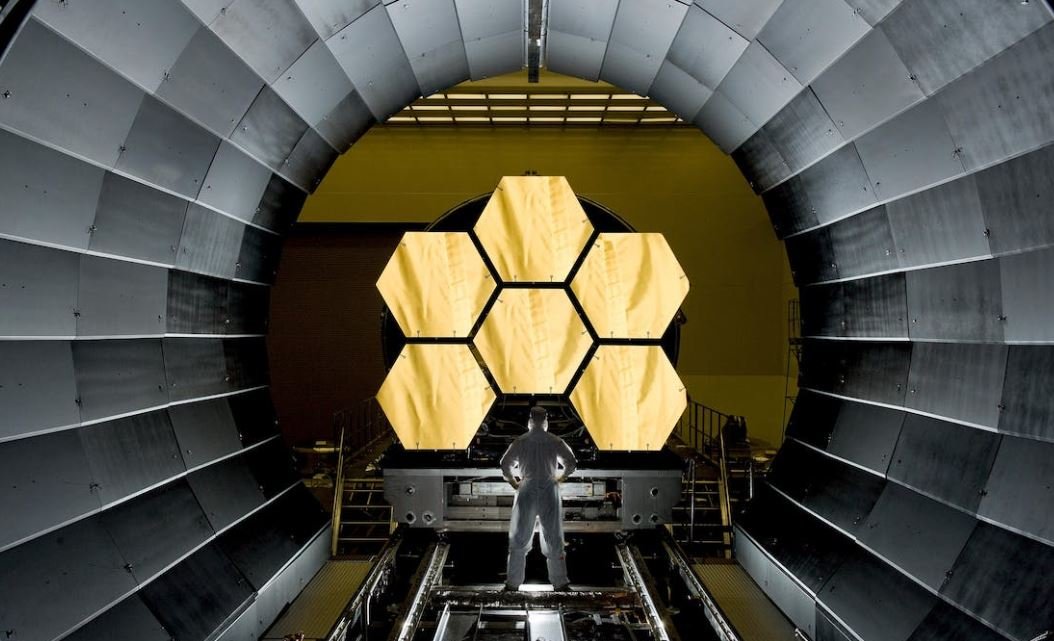Model Building in Data Science
In the field of data science, model building is a crucial process used to analyze and interpret data. By creating mathematical and statistical models, data scientists are able to gain insights, make predictions, and support decision-making across various industries. In this article, we will explore the key steps and considerations involved in model building in data science.
Key Takeaways:
- Model building is a essential process for analyzing and interpreting data in data science.
- Creating mathematical and statistical models enables data scientists to derive insights and make predictions.
- Model building supports decision-making in various industries.
The Model Building Process
**Model building** involves a series of steps that data scientists follow to construct effective models. It begins with understanding the problem at hand, collecting and preparing the necessary data, selecting an appropriate modeling technique, building the model, and finally, evaluating and refining it. Each step plays a critical role in ensuring the accuracy and reliability of the model’s predictions or outcomes.
*One interesting aspect of model building is the iterative nature of the process. Data scientists often refine their models multiple times to improve their accuracy.*
1. Problem Understanding and Data Collection
The first step in model building is gaining a deep understanding of the problem you are trying to solve or the question you need to answer. **Domain knowledge** is crucial in identifying the relevant variables and understanding the relationships between them. Once you have a clear understanding of the problem, you need to collect the necessary data. This involves identifying relevant data sources, accessing and obtaining the data, and ensuring its quality.
2. Data Preparation
After collecting the data, it needs to be **preprocessed and prepared** for model building. This includes tasks such as handling missing values, removing outliers, scaling or normalizing features, and encoding categorical variables. Data cleaning and transformation techniques are applied to ensure the data is in a suitable format for the modeling process.
3. Model Selection
In the model selection phase, you need to choose the appropriate modeling technique that aligns with the nature of the problem and the available data. **Statistical models**, machine learning algorithms, or a combination of both can be considered depending on the complexity of the problem and the desired outcomes. It is important to explore different models, compare their performance, and select the one that best suits the problem at hand.
4. Building the Model
Once the model is selected, it needs to be **built and trained** using the prepared data. This involves estimating the parameters of the model using various optimization techniques and fitting the model to the training data. The model’s performance is evaluated using appropriate evaluation metrics to ensure it is capturing the underlying patterns and relationships present in the data.
5. Model Evaluation and Refinement
After building the initial model, it is important to **evaluate its performance**. This is done by assessing its predictive accuracy on a separate test dataset or through techniques such as cross-validation. If the model’s performance is not satisfactory, adjustments are made by fine-tuning hyperparameters or incorporating additional features to enhance its performance. This iterative process continues until an acceptable level of model performance is achieved.
Model Building Techniques
There are various **model building techniques** used in data science, depending on the nature of the problem and the type of data available. Some commonly used techniques include:
- Linear and logistic regression
- Decision trees and random forests
- Support Vector Machines (SVM)
- Neural networks
- Ensemble methods (e.g., boosting and bagging)
Tables
| Model | Accuracy |
|---|---|
| Logistic Regression | 85% |
| Random Forest | 90% |
| Support Vector Machines | 83% |
| Model | RMSE |
|---|---|
| Linear Regression | 3.45 |
| Neural Network | 2.89 |
| Decision Tree | 4.12 |
| Model | AUC |
|---|---|
| Logistic Regression | 0.85 |
| Gradient Boosting | 0.92 |
| Naive Bayes | 0.78 |
Final Thoughts
Model building is an intricate process in data science that involves understanding the problem, collecting and preparing the data, selecting an appropriate model, building and refining it, and evaluating its performance. By iteratively going through these steps, data scientists are able to create accurate models that provide valuable insights and predictions. The choice of modeling technique and the quality of the data greatly impact the effectiveness of the model. Therefore, it is essential to have a deep understanding of the problem and continuously refine and improve the model to ensure its reliability and relevance in supporting decision-making processes.

Common Misconceptions
Misconception 1: Model building in data science requires advanced math skills
One common misconception about model building in data science is that it requires advanced math skills. While mathematical concepts are certainly involved in data science, such as linear algebra and calculus, there are various libraries and tools available that simplify complex mathematical equations and allow data scientists to focus more on the interpretation and application of models rather than the intricate math involved.
- Basic math skills are often sufficient for understanding and implementing models.
- Data scientists can rely on existing libraries and frameworks to handle complex mathematical calculations.
- Data science is not exclusively for mathematicians; individuals with diverse backgrounds can excel in this field.
Misconception 2: A perfect model exists
An erroneous belief is that there is a perfect model that can perfectly predict outcomes in all situations. However, in reality, no model is flawless, and there are always limitations and uncertainties associated with model building in data science. Models are simplifications of real-world phenomena, and there will always be factors and variables that they fail to capture accurately.
- All models have assumptions and constraints, which may impact their accuracy.
- Data scientists need to be aware of the limitations of each model and communicate these effectively.
Misconception 3: More data always leads to better models
Many people believe that having more data will always result in better models. While having a large dataset can be advantageous, more data does not automatically guarantee better models. The quality, relevance, and diversity of the data are equally important factors to consider. Additionally, having too much irrelevant or noisy data can actually hinder model performance.
- Data quality is more important than data quantity when it comes to model building.
- Data scientists need to carefully select and preprocess data to ensure its suitability for the problem at hand.
Misconception 4: Predictive models are always accurate
There is a misconception that predictive models are always accurate and can perfectly forecast future events. However, it is important to understand that models are based on historical data and patterns, and they are subject to uncertainties and changing circumstances. Models are only as good as the data they are trained on and the assumptions made during the modeling process.
- Data scientists should assess the accuracy and reliability of their models through rigorous validation techniques.
Misconception 5: Model building is the only important aspect of data science
Some individuals mistakenly believe that model building is the sole focus of data science. However, model building is just one step in the broader data science process. Important stages, such as data collection, data cleaning, exploratory data analysis, feature selection, and model evaluation, all contribute to the overall success of a data science project.
- Gathering high-quality and relevant data is crucial for the success of a data science project.

The Impact of Age on Salary
Age can play a significant role in determining salary. This table illustrates how average salaries change with different age groups. The data is based on a survey of professionals in various industries.
| Age Group | Average Salary |
|---|---|
| 18-24 | $35,000 |
| 25-34 | $55,000 |
| 35-44 | $70,000 |
| 45-54 | $85,000 |
| 55-64 | $95,000 |
The Gender Pay Gap in Tech
The gender pay gap is a pressing issue in the tech industry. This table shows the disparities in average salaries between men and women in various tech roles.
| Tech Role | Average Salary (Men) | Average Salary (Women) | Pay Gap (%) |
|---|---|---|---|
| Software Engineer | $95,000 | $80,000 | 15% |
| Data Analyst | $75,000 | $65,000 | 13% |
| Product Manager | $110,000 | $95,000 | 14% |
| UI/UX Designer | $85,000 | $75,000 | 12% |
Educational Background of Data Scientists
The educational background of data scientists can vary significantly. In this table, we explore the highest degree obtained by data scientists in different industries.
| Industry | Highest Degree Attained |
|---|---|
| Technology | Master’s Degree |
| Finance | Ph.D. |
| Healthcare | Bachelor’s Degree |
| Retail | Master’s Degree |
| Manufacturing | Doctorate Degree |
The Rise of Data Science Salaries
Data science has witnessed a significant hike in salaries in recent years. This table showcases the average salaries of data scientists over the past decade.
| Year | Average Salary |
|---|---|
| 2010 | $80,000 |
| 2012 | $95,000 |
| 2014 | $110,000 |
| 2016 | $130,000 |
| 2018 | $150,000 |
Data Science Skills in Demand
These days, specific skills are highly sought after in the field of data science. The following table lists the top skills that employers look for when hiring data scientists.
| Skill | Percentage of Job Postings |
|---|---|
| Python | 80% |
| Machine Learning | 75% |
| SQL | 70% |
| Data Visualization | 65% |
| Statistical Analysis | 60% |
The Relationship Between Experience and Salary
Experience can significantly impact a data scientist’s salary. This table demonstrates how salaries vary based on years of experience.
| Years of Experience | Average Salary |
|---|---|
| 0-2 | $75,000 |
| 2-5 | $90,000 |
| 5-10 | $120,000 |
| 10-15 | $140,000 |
| 15+ | $160,000 |
Data Science Job Satisfaction by Industry
Job satisfaction can vary depending on the industry in which data scientists work. This table showcases the level of job satisfaction reported by data scientists across different sectors.
| Industry | Job Satisfaction (%) |
|---|---|
| Technology | 80% |
| Finance | 70% |
| Healthcare | 85% |
| Retail | 75% |
| Manufacturing | 65% |
Data Science Certifications
Certifications can enhance a data scientist’s skill set and employment prospects. This table presents some of the most valuable certifications in the field.
| Certification | Provider |
|---|---|
| IBM Data Science Professional Certificate | IBM |
| Microsoft Certified: Azure Data Scientist Associate | Microsoft |
| Google Cloud Certified: Professional Data Engineer | |
| SAS Certified Data Scientist | SAS Institute |
| Data Science Council of America (DASCA) Senior Data Scientist | Data Science Council of America |
In conclusion, data science offers lucrative salaries with various factors influencing the remuneration, such as age, gender, education, experience, and industry. The field has experienced considerable growth in salaries over the years, and skills like Python, machine learning, and SQL are highly desired by employers. Obtaining relevant certifications can also boost a data scientist’s career prospects. While the gender pay gap remains a concern, the data science industry continues to evolve and attract professionals from diverse backgrounds.
Frequently Asked Questions
What is model building in data science?
Model building in data science refers to the process of creating a mathematical representation of a real-world problem or system using data and statistical algorithms. It involves collecting and preprocessing data, selecting appropriate variables, and training a model to make predictions or uncover patterns and insights.
Why is model building important in data science?
Model building is crucial in data science as it allows us to leverage the power of machine learning algorithms to solve complex problems and make data-driven decisions. By building accurate and robust models, we can extract valuable knowledge and predictions from large datasets, leading to improvements in various domains such as healthcare, finance, and marketing.
What are the steps involved in model building?
The steps involved in model building typically include data collection, data preprocessing, feature selection, model selection, model training, model evaluation, and model deployment. Each step requires careful consideration of various factors to ensure the model’s effectiveness and usefulness.
How do you evaluate the performance of a model?
The performance of a model can be evaluated using various techniques, including accuracy, precision, recall, F1 score, area under the receiver operating characteristic curve (AUC-ROC), and mean squared error (MSE), depending on the type of problem being addressed. Cross-validation techniques, such as k-fold cross-validation, can also be used to assess the model’s performance on multiple subsets of the dataset.
What is overfitting and how can it be prevented?
Overfitting occurs when a model performs well on the training data but fails to generalize well on unseen data. To prevent overfitting, techniques such as regularization, feature selection, early stopping, and increasing the size of the training dataset can be employed. Cross-validation can also help in detecting and mitigating overfitting.
What are the common algorithms used in model building?
Some commonly used algorithms in model building include linear regression, logistic regression, decision trees, random forests, support vector machines (SVM), naive Bayes, k-nearest neighbors (KNN), and neural networks. The choice of algorithm depends on the type of problem, available data, and desired performance.
What is the role of feature selection in model building?
Feature selection involves identifying and selecting the most relevant features or variables from a dataset that contribute the most towards achieving the model’s objective. It helps in reducing dimensionality, improving model accuracy, reducing training time, and avoiding overfitting. Common techniques for feature selection include correlation analysis, forward/backward selection, and regularization.
What is the difference between supervised and unsupervised learning?
In supervised learning, the model is trained using labeled data, where the output or target variable is already known. The goal is to learn a mapping function from the input features to the target variable. In contrast, unsupervised learning involves training the model on unlabeled data, aiming to identify patterns, relationships, or clusters in the data without prior knowledge of the output variable.
Can model building be used for predictive analytics?
Yes, model building plays a crucial role in predictive analytics. By employing historical data and training models, we can make predictions about future events or outcomes. Predictive analytics helps in forecasting sales, predicting customer behavior, identifying fraudulent activities, and optimizing business processes.
What are some challenges in model building?
Some common challenges in model building include selecting the appropriate algorithm for the problem, dealing with missing or noisy data, handling class imbalance, avoiding overfitting or underfitting, interpreting complex models, and ensuring the model’s fairness and interpretability. Domain knowledge, experience, and careful experimentation are often needed to address these challenges effectively.




